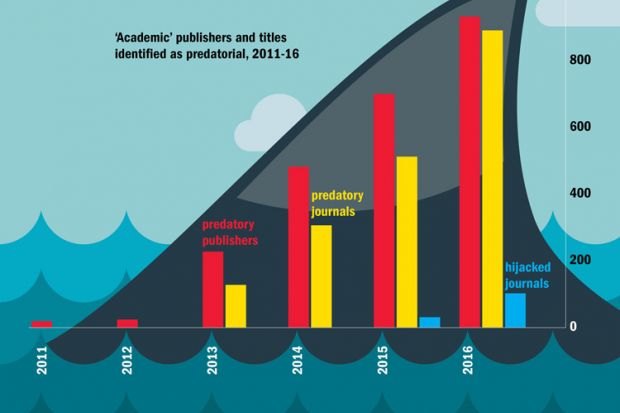These operate by publishing academic work with few or no checks in return for a fee.
“Hijacked” journals are those that pretend to be existing, reputable journals in order to dupe academics into sending them their paper and fee.
The figures come from Jeffrey Beall, a librarian at the University of Colorado Denver, who compiles lists of such journals and publishes them on his blog Scholarly Open Access.
A study of predatory journals released last year found that a majority of academics publishing in such journals were from Asia, particularly India, while the practice was also rife in Nigeria.
It also argued that the term “predatory” is misleading, because many of the academics involved are likely to be fully aware of the journal’s lack of standards, but are nevertheless happy to be published there in the hope that it will boost their careers.
POSTSCRIPT:
Print headline: Bottom feeders: journals and publishers setting sights on the unwary
Register to continue
Why register?
- Registration is free and only takes a moment
- Once registered, you can read 3 articles a month
- Sign up for our newsletter
Subscribe
Or subscribe for unlimited access to:
- Unlimited access to news, views, insights & reviews
- Digital editions
- Digital access to THE’s university and college rankings analysis
Already registered or a current subscriber?
